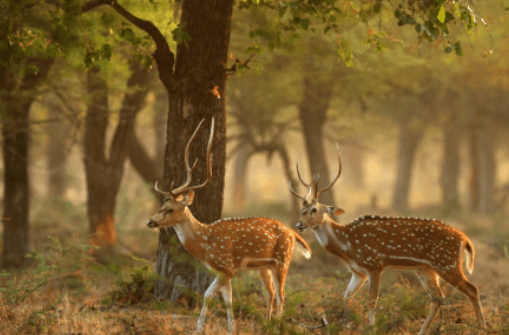How to Create Wildlife Habitats: Tips for Supporting Local Ecosystems

Creating a wildlife habitat in your backyard is more than just a gardening project; it’s a commitment to conservation. For young families, retirees, and nature enthusiasts alike, supporting local ecosystems is a rewarding endeavor that brings joy and vibrancy to any outdoor space. By designing a sanctuary, your backyard can become a haven for birds, insects, mammals, and a variety of other creatures. In this post, we explore practical ways to create these vital habitats, ensuring your outdoor area contributes positively to local biodiversity.
Understanding Ecosystem Balance
Every creature plays a role in the ecosystem, from the tiniest insect to the largest mammal. By creating wildlife habitats, you’re helping maintain this delicate balance. Animals and plants interact in complex ways, often depending on one another for survival. Supporting this balance ensures a healthier environment, cleaner air, and richer soil. While gardens can be aesthetically pleasing, their real value lies in how they contribute to preserving natural habitats.
See also: Top Tips for Preparing Your Pet for Boarding
Choosing Native Plants
Selecting native plants is essential in creating a successful wildlife habitat. These plants are adapted to the local climate and soil conditions, making them easier to grow and maintain. They also provide food and shelter for native species. From vibrant wildflowers to sturdy shrubs, native flora attracts pollinators like bees and butterflies, which are crucial for plant reproduction. By planting native species, you not only enhance the beauty of your garden but also support local wildlife.
Building a Water Source
Water is a fundamental need for all living creatures. Introducing a water feature, like a birdbath or small pond, can attract a variety of wildlife to your garden. Ensure that your water source is clean and accessible. Consider adding rocks or logs around the edges to offer safe perches for birds and amphibians. Even a shallow dish of water can make a significant impact, providing hydration for thirsty critters.
Designing Shelter Spaces
Providing shelter is key to creating a welcoming environment for wildlife. Dense shrubs, brush piles, and dead trees offer excellent refuge for birds, small mammals, and insects. Consider leaving parts of your garden untidy—fallen leaves and logs are perfect habitats for many creatures. Birdhouses and bat boxes can also provide much-needed shelter, especially in urban areas where natural nesting sites are scarce.
Encouraging Birds and Beneficial Insects
Birds and insects are not only delightful to watch but also play vital roles in pest control and pollination. Encourage their presence by planting a diverse array of plants that bloom at different times of the year. This ensures a consistent food supply. Avoid using pesticides, as they can harm beneficial insects and disrupt the ecosystem. Instead, rely on your garden’s biodiversity to naturally manage pests.
Creating a Tree Canopy
Trees are the backbone of any wildlife habitat. They provide food, shelter, and nesting sites for countless creatures. When planning your garden, consider incorporating a variety of tree species to create layers of vegetation. If you’re starting from scratch, a tree nursery in Salt Lake City might offer a range of native trees suited to your area. The canopy will provide shade, reduce temperatures, and create a serene environment for both wildlife and humans.
Cultivating a Pollinator Paradise
Pollinators are essential for the reproduction of many plants. By creating a pollinator-friendly garden, you’re directly supporting the health of your local ecosystem. Plant a mix of flowers, herbs, and shrubs that provide nectar and pollen throughout the year. Avoid hybrid plants that may have reduced nectar. Simple changes, like planting milkweed for monarch butterflies, can make a big difference in supporting these crucial creatures.
Composting for Soil Health
Healthy soil is the foundation of a thriving garden. Composting kitchen scraps and garden waste enriches your soil, providing vital nutrients that promote plant growth. Rich soil supports a robust ecosystem, encouraging earthworms and beneficial microorganisms. These organisms improve soil structure and fertility, making your garden an even more appealing place for plants and wildlife alike.
Connecting with Your Local Community
Supporting local wildlife doesn’t have to be a solitary endeavor. Joining community groups focused on conservation can enhance your efforts and provide valuable resources. Many communities offer programs and workshops on native gardening and habitat restoration. By connecting with others, you can share knowledge, swap plants, and participate in local conservation projects that benefit the broader community.
Observing and Adapting
Creating a wildlife habitat is an ongoing process. Take the time to observe what works and what doesn’t in your garden. Notice which plants attract the most wildlife and which areas could use improvement. Be willing to adapt your approach based on these observations. Over time, your garden will evolve into a flourishing habitat, offering a safe haven for a diverse range of species.
Reflecting on Your Impact
Creating a wildlife habitat is a meaningful way to contribute to environmental conservation. By providing food, water, and shelter, you’re making a significant impact on local biodiversity. Not only does this enrich your outdoor experience, but it also fosters a deeper connection to nature. Remember, every small effort counts towards creating a sustainable future for all living creatures. Consider reaching out to local environmental organizations for further guidance and support in your conservation efforts.





